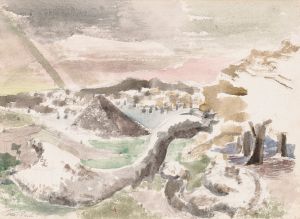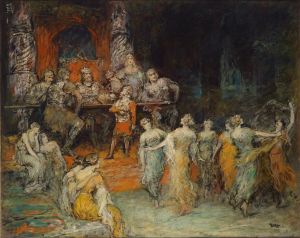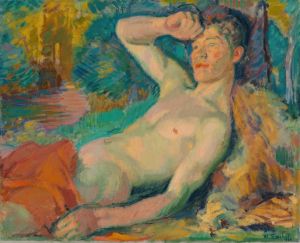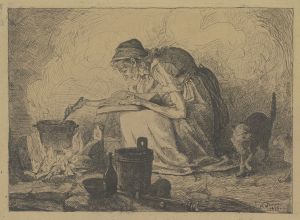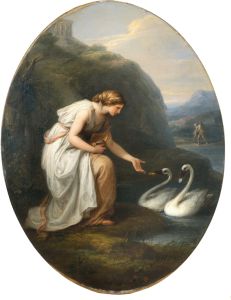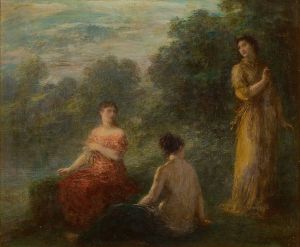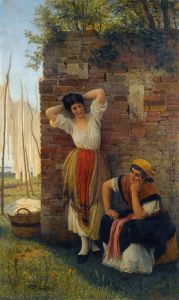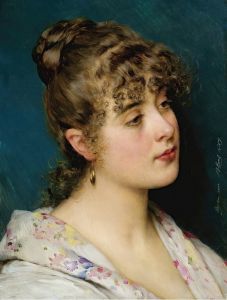
Faust and Marguerite In The Garden
A hand-painted replica of Eugen von Blaas’s masterpiece Faust and Marguerite In The Garden, meticulously crafted by professional artists to capture the true essence of the original. Each piece is created with museum-quality canvas and rare mineral pigments, carefully painted by experienced artists with delicate brushstrokes and rich, layered colors to perfectly recreate the texture of the original artwork. Unlike machine-printed reproductions, this hand-painted version brings the painting to life, infused with the artist’s emotions and skill in every stroke. Whether for personal collection or home decoration, it instantly elevates the artistic atmosphere of any space.
Eugen von Blaas, an Austrian painter known for his genre scenes and portraits, created the painting "Faust and Marguerite in the Garden." Von Blaas was born on July 24, 1843, in Albano Laziale, Italy, and he became renowned for his detailed and vibrant depictions of everyday life, often focusing on Venetian scenes and figures. His works are characterized by their technical precision and the ability to capture the subtleties of human expression and interaction.
"Faust and Marguerite in the Garden" is inspired by the classic German legend of Faust, which was famously adapted into a play by Johann Wolfgang von Goethe. The story of Faust revolves around a scholar who makes a pact with the devil, Mephistopheles, trading his soul for unlimited knowledge and worldly pleasures. Marguerite, also known as Gretchen, is a central character in Goethe's version of the tale. She is a young woman whom Faust falls in love with, and her story is one of innocence, love, tragedy, and redemption.
In von Blaas's painting, the scene is set in a lush garden, capturing the romantic and dramatic essence of the encounter between Faust and Marguerite. The garden setting is significant as it symbolizes both the beauty and the transient nature of life, themes that are central to the Faust legend. Von Blaas's attention to detail is evident in the intricate depiction of the garden's flora and the delicate rendering of the characters' expressions and attire.
The painting reflects von Blaas's academic training and his ability to convey narrative through visual art. His use of color and light enhances the emotional impact of the scene, drawing the viewer into the intimate moment shared by the characters. The composition of the painting guides the viewer's eye through the scene, emphasizing the connection between Faust and Marguerite while also highlighting the underlying tension and foreboding that accompanies their relationship.
Eugen von Blaas's work, including "Faust and Marguerite in the Garden," is part of a broader tradition of 19th-century European art that often drew on literary and historical themes. His paintings are held in various collections and continue to be appreciated for their technical skill and narrative depth. While von Blaas is primarily celebrated for his genre scenes, this particular work demonstrates his ability to engage with complex literary subjects and translate them into compelling visual narratives.
Overall, "Faust and Marguerite in the Garden" exemplifies von Blaas's artistic strengths and his contribution to the visual interpretation of literary classics. The painting remains a testament to his skill in capturing the essence of human emotion and storytelling through the medium of paint.





